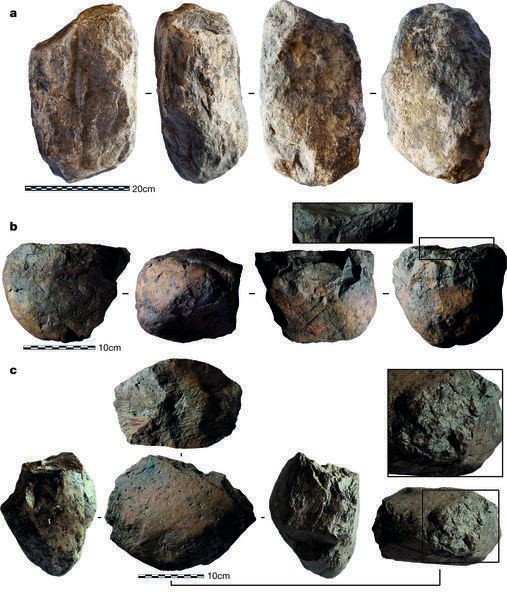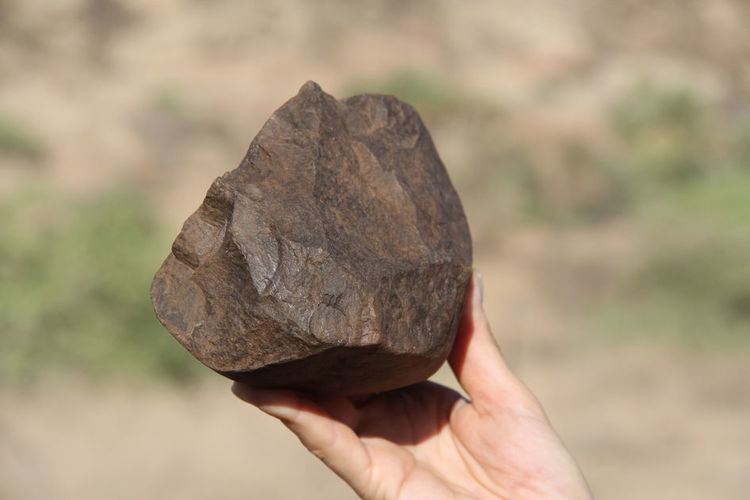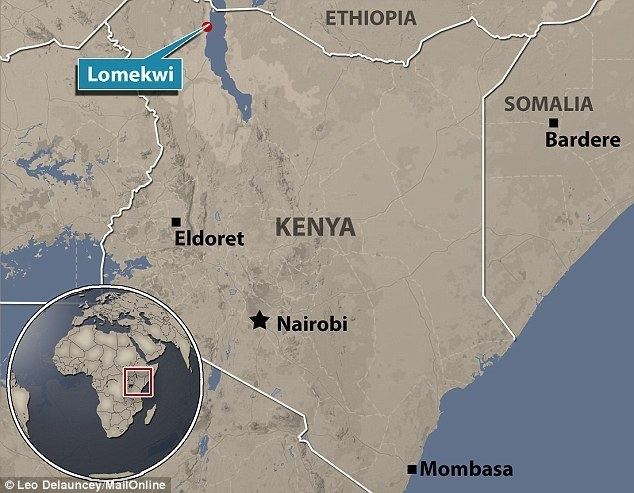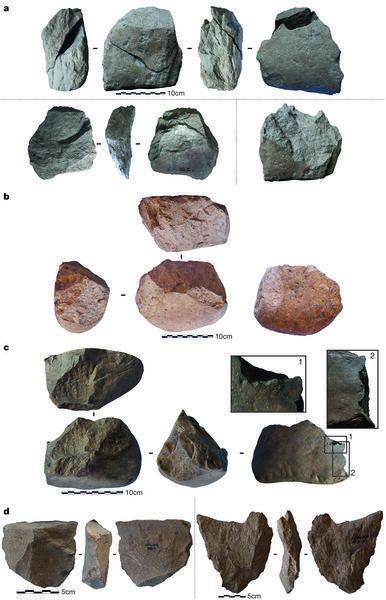Alternate name LOM3 Type Ancient campsite Excavation dates 2011 (2011)-present | Periods 3.3 million years ago | |
 | ||
Cultures | ||
Lomekwi 3 world s oldest stone tools predate humans
Lomekwi 3 is the name of an archaeological site in Kenya where ancient stone tools have been discovered dating to 3.3 million years ago, which make them the oldest ever found.
Contents
- Lomekwi 3 world s oldest stone tools predate humans
- Earliest stone tools from lomekwi 3 west turkana dr sonia harmand
- Lomekwi 3
- Artifacts
- References

Earliest stone tools from lomekwi 3 west turkana dr sonia harmand
Lomekwi 3

In July 2011, a team of archeologists led by Sonia Harmand and Jason Lewis of Stony Brook University, United States, was heading to a site near Kenya's Lake Turkana near where Kenyanthropus platyops fossils had previously been found. The group made a wrong turn on the way and ended up at a previously unexplored region and decided to do some survey. They quickly found some stone artifacts on the site, which they named Lomekwi 3. A year later they returned to the site for a full excavation. Harmand presented her findings at the annual meeting of the Paleoanthropology Society on April 14, 2015 and published the full announcement and results on the cover of Nature on May 21, 2015.
Artifacts

Around 20 well preserved artifacts have been dug up at Lomekwi 3 including anvils, cores, and flakes. An additional 130 artifacts were found on the surface. In one instance, Harmand's team was able to match a flake to its core, suggesting a hominin had made and discarded the tool at the site. The tools were generally quite large – larger than the oldest known stone tools, recovered near Gona, in the Afar Region of Ethiopia, in 1992. According to Harmand, it appeared that the tool makers had purposely selected large, heavy blocks of strong stone, ignoring smaller blocks of the same material found in the area. She ruled out the possibility that the tools were actually natural rock formations, saying "The artifacts were clearly knapped and not the result of accidental fracture of rocks". Analysis suggested the cores had been rotated as flakes were struck off. The purpose of the tools found at Lomekwi 3 is unclear, as animal bones found at the site do not bear any sign of hominin activity.

Based on the buried artifacts' stratigraphic position (in undisturbed sediment) relative to two layers of volcanic ash and known magnetic reversals, Harmand and her team dated the tools to 3.3 million years ago. The finds at Lomekwi therefore represent the oldest stone tools ever discovered, predating the Gona tools by 700,000 years. The date also predates the Homo genus by 500,000 years, suggesting tool making arose with Australopithecus or Kenyanthropus (which was found near Lomekwi 3). Previously, evidence of stone tool use by Australopithecus has been suggested on the basis of marks on animal bones, but those findings have been hotly debated, with no scientific consensus forming on either side of the debate.

Harmand said the Lomekwi 3 artifacts do not fit into the Oldowan tool making tradition and should be considered part of a distinct tradition, which she termed Lomekwian. It has been hypothesized that tool making may have aided in the evolution of Homo into a distinct genus. However, it is unclear whether the Lomekwian tools are related to those made by Homo species – it is possible the technology was forgotten and later rediscovered.

Independent researchers who have seen the tools are generally supportive of Harmand's conclusions. George Washington University anthropologist Alison Brooks said the tools "could not have been created by natural forces ... the dating evidence is fairly solid." Rick Potts, head of the Human Origins Program at the Smithsonian Institution, said the tools represented a more primitive style than known human-made tools, but something more sophisticated than what modern chimpanzees do. "There's no doubt it's purposeful" toolmaking, he remarked. Paleoanthropologist Zeresenay Alemseged, who was responsible for the earlier research suggesting Australopithecus had made tools, also backed Harmand's conclusions.
